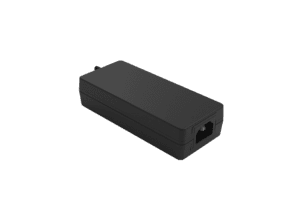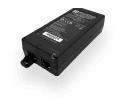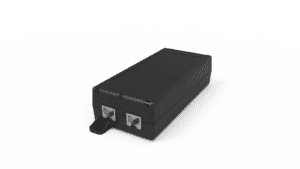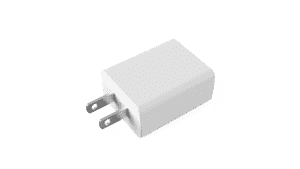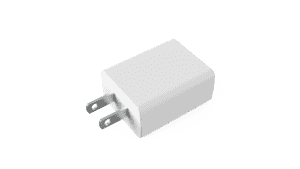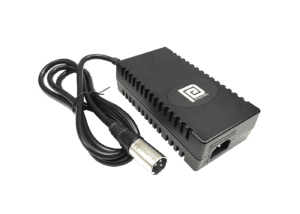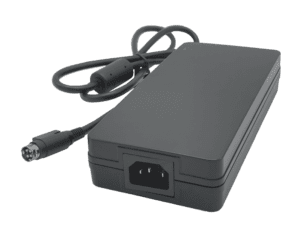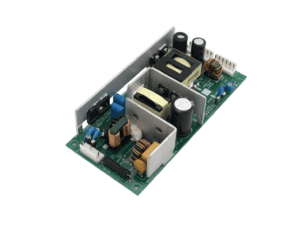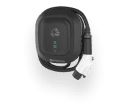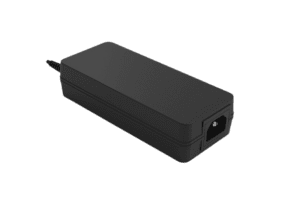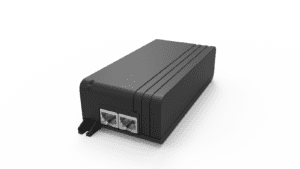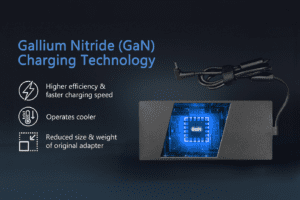BLOG
Universal Power Adapter: Why Interchangeable Plugs Are Game Changers
Table of contents

When it comes to powering devices around the globe, a universal power adapter with interchangeable plugs offers both convenience and versatility. Whether you’re a frequent traveler looking to avoid the hassle of carrying multiple adapters, or an OEM seeking a cost-effective way to provide multi-region compatibility, these adapters are a practical solution. For travelers, they simplify your journey by ensuring your devices stay charged no matter where you are. For OEMs, they streamline logistics and product designs, helping businesses cater to diverse international markets with varying plug and voltage standards. In this article, we’ll explore the benefits, configurations, and key features of universal power adapters to help you stay connected wherever you go.
What Are Universal Power Adapters?
Universal power adapters are the Swiss Army knife of power solutions, converting both plug types and voltage levels to ensure successful charging wherever you are in the world. They typically feature interchangeable plug heads that accommodate the varying socket designs used globally, along with built-in voltage converters or regulators to handle differences between countries using 110-120V and those using 220-240V. These adapters also include safety features like surge protection and fuse systems to prevent damage to both the device and the adapter.
Key Features of Universal Power Adapters
- Interchangeable Plug System: The primary feature of universal adapters is their interchangeable plug system. This allows users to switch out different plug types to match the socket configuration of their destination. Adapters typically come with a variety of plug types, including those for North America, Europe, the UK, Australia, and more.
- Modular Design: Many universal adapters feature a modular design, which means that components like plug faceplates and power plugs can be replaced or adjusted. This design enhances flexibility and extends the lifespan of the adapter by allowing users to replace only the worn-out parts.
- Compact and Portable: Universal adapters are often compact and lightweight, making them easy to carry in a travel bag or suitcase. Their portability ensures that you can keep your devices powered up wherever you go.
- Built-In Surge Protection: Many universal adapters come with built-in surge protection to safeguard your electronic devices from power spikes and fluctuations. This feature is particularly important when traveling to regions with less stable power grids.
- Voltage Conversion: Some universal adapters also include voltage conversion capabilities, allowing you to use devices that require different voltage levels. This feature ensures that your devices are compatible with the power systems of various countries.
Types of Universal Power Adapters
Universal power adapters are designed to meet varying power needs and plug types across different regions. Here’s a closer look at the primary types:
- Travel Adapters: These versatile adapters are essential for globetrotters, allowing you to use your devices worldwide. They come in a “wall wart” configuration, which means they plug directly into the wall outlet. Travel adapters are equipped with interchangeable AC faceplates or plug blades, enabling them to fit various international outlets. This adaptability ensures that you can safely power your devices no matter where you travel.
- AC Power Adapters: Often called “Power Bricks”, this configuration features a larger, external unit that usually rests on the floor or a desk. It contains the AC-to-DC conversion circuitry and connects to your device via a separate cable (IEC 60320 connectors). Power bricks are often used for devices with higher power demands or those that require more substantial power supplies.
Each type of adapter serves a specific purpose, whether you’re adapting to different electrical systems while traveling or managing power supply needs at home or in the office.
Understanding IEC 60320 Standards for AC Power Adapters
To ensure compatibility and safety, many universal power adapters adhere to the IEC 60320 standard. This international standard defines various types of inlets and connectors used in non-fixed adapters. These connectors are commonly found in power bricks used for laptops and other electronics.
- C6 Inlet (Cloverleaf Connector): The C6 inlet, often referred to as the “Cloverleaf” connector, is a compact and secure connector used in many portable devices. Its design ensures a stable connection and is compatible with various power cords.
- C8 Inlet (Figure Eight Connector: Known as the “Figure Eight” connector, the C8 inlet is commonly used in smaller devices such as radios and game consoles. Its simple design and ease of use make it a popular choice for many applications.
- C14 Inlet (Standard U Connector): The C14 inlet, or “Standard U” connector, is used in more substantial equipment such as computer power supplies. Its robust design ensures a reliable connection for high-power devices, making it suitable for use in industrial and office settings.
- C5 and C7 Inlets: Additional inlets such as the C5 (Mickey Mouse) and C7 (Figure of Eight) are also prevalent in various devices. Understanding these connectors can help in selecting the appropriate adapter for different needs.
These inlets and connectors are designed to meet stringent physical, electrical, and safety standards. By adhering to the IEC 60320 standard, universal adapters ensure that they are safe and compatible with power systems worldwide.
How does a Universal Power Adapter Work?
Diving into the internal circuitry of a universal power adapter, we begin to understand how exactly it adjusts voltage levels when different AC connectors are being used. Universal power adapters are designed to handle a wide range of input voltages while providing a stable output voltage to power various electronic devices. The key is in their ability to step-up or step-down voltage based on the specific requirements of different regions. Let’s take an in-depth look:
Input Voltage Range and AC Plug Compatibility
Universal power adapters are engineered to accept a wide range of input voltages, typically from 100V to 240V AC, which covers the standard voltages used around the world. This is achieved through a combination of sophisticated design and internal circuitry.
AC Plugs and Connectors:
- Interchangeable Plugs: Many universal adapters come with interchangeable plug faces or connectors that fit different types of AC sockets used in various regions. These plugs do not alter the voltage but simply adapt the physical connection between the power outlet and the adapter.
Voltage Conversion
Step-Up and Step-Down Transformers:
- Auto-transformers: For adapters that include an auto-transformer, the device can adjust the input voltage to the required output voltage. An auto-transformer uses a single winding that acts as both the primary and secondary windings. By tapping into different points on the winding, it can either step-up or step-down the voltage.
- Dual-Winding Transformers: Some universal adapters use dual-winding transformers with separate primary and secondary windings. The input voltage is stepped up or down based on the turns ratio between the primary and secondary windings. A step-up transformer increases the voltage, while a step-down transformer decreases it.
Switching Power Supply:
- AC-DC Conversion: In many modern universal adapters, the input AC voltage is first converted to a DC voltage using a rectifier circuit, which consists of diodes that convert AC to DC.
- Voltage Regulation: The DC voltage is then processed by a switching regulator. The switching regulator uses high-frequency transistors to switch the DC voltage on and off rapidly, which is then filtered and transformed into a stable output voltage. This method is efficient and compact, allowing the adapter to handle a wide range of input voltages without significant bulk.
Integrated Circuit (IC) Controllers:
- PWM Controllers: Pulse Width Modulation (PWM) controllers are used in switching power supplies to regulate the output voltage. The PWM controller adjusts the duty cycle of the switching signal to control the amount of power delivered to the output.
- Feedback Mechanisms: These controllers use feedback circuits to monitor the output voltage and adjust the switching process accordingly to maintain a stable output.
Safety and Protection Features
Overcurrent and Overvoltage Protection:
- Fuses: Universal power adapters often include fuses that protect against overcurrent conditions. If the current exceeds a safe level, the fuse blows, interrupting the circuit and preventing damage.
- Overvoltage Protection: The adapter may also include components such as varistors or transient voltage suppression (TVS) diodes that protect against spikes and surges in the input voltage.
Thermal Protection:
- Temperature Sensors: Some adapters have thermal protection that shuts down the adapter if it overheats, ensuring safety and preventing damage.
Output Adjustment
Selectable Output Voltages:
- Manual Switches: Some universal adapters come with a manual switch to select the desired output voltage. Users must select the correct voltage based on their device’s requirements.
- Automatic Adjustment: Advanced models use automatic voltage detection to adjust the output voltage according to the device’s needs.
In summary, a universal power adapter can handle various input voltages through sophisticated design elements such as transformers, switching regulators, and integrated circuits. By using interchangeable plugs, it ensures compatibility with different regional sockets while maintaining the ability to step up or step down voltage as needed. The result is a versatile and reliable power solution suitable for use worldwide.
Choosing the Right Universal Power Adapter: Durability and Build Quality Considerations
When selecting the right universal power adapter, it’s crucial to choose one that is not only built to last but also comes from a manufacturer that emphasizes safety, energy efficiency, and adherence to rigorous industry standards. Whether you’re an OEM searching for a convenient solution for your customers or a traveler looking for a dependable adapter, considering a reputable brand like Phihong can make all the difference. Here’s why Phihong should be at the top of your list:
- More Than 50 Years of Industry Expertise: With over half a century of experience in the power electronics sector, Phihong has become a globally trusted name. Their long-standing presence speaks volumes about their commitment to quality and reliability. Over the years, Phihong has honed its expertise to deliver products that meet and exceed industry standards. Their custom power solutions are designed to ensure efficiency and longevity in a wide range of applications, from consumer electronics to industrial systems.
- 1-Year Warranty for Peace of Mind: When investing in a power adapter, having a solid warranty is essential to ensure long-term satisfaction. Phihong backs their products with a comprehensive 1-year warranty, underscoring their confidence in the durability and reliability of their adapters. This warranty provides reassurance that you’re investing in a product that’s designed to perform and last.
- Uncompromised Product Efficiency: Energy efficiency is more than just a trend; it’s a necessity in today’s market. Phihong’s universal adapters and PoE injectors comply with the U.S. Department of Energy’s (DOE) stringent Level VI efficiency standards. These standards are critical for reducing energy consumption and minimizing environmental impact. Phihong is also forward-thinking, preparing to meet the upcoming DOE Level VII standards. By choosing Phihong, OEMs and consumers alike can feel confident that they are selecting products that not only perform reliably but also contribute to global energy-saving initiatives.
- Advanced Automation and Manufacturing Excellence: Phihong’s state-of-the-art manufacturing facilities are highly automated, with an impressive 85% automation rate, which enables superior cost-efficiency and stringent quality control. Since 2020, this automation has allowed Phihong to scale production without compromising on quality. Their facilities are certified to ISO 9001 and ISO 9002 standards, reflecting their commitment to excellence. With a defect rate of less than 50 parts per million (ppm), Phihong ensures that every product leaving their facilities meets the highest standards of performance and durability. For OEMs, this means reduced risks, lower production costs, and a streamlined supply chain.
- Global Reach and Local Compliance: Phihong products are designed to meet global standards, making them ideal for OEMs and travelers alike. Whether you need a universal power adapter that meets European, North American, or Asian standards, Phihong’s products are engineered to comply with multiple regulatory requirements. This makes their adapters perfect for frequent travelers who need reliable power solutions in various countries or OEMs that distribute products globally.
In conclusion, whether you are an OEM seeking a reliable, efficient, and compliant power adapter or a consumer looking for a travel adapter that you can depend on across the globe, Phihong offers a comprehensive solution. Their long-standing reputation, commitment to innovation, and focus on quality and reliability make Phihong an ideal choice. By choosing Phihong, you benefit from industry-leading expertise, cutting-edge technology, and products designed to perform well in both the present and the future.
CLIENT'S QUOTE
Phihong's Power-Over-Ethernet solutions have transformed our network, boosting efficiency and reducing costs. Their seamless integration has simplified both installation and maintenance.
Explore More with Phihong USA
As we conclude our exploration of travel adapters, it’s clear that this field is experiencing unprecedented growth. For over 50 years, Phihong has been at the forefront of innovation, serving Fortune 500 companies across various industries as a leading power supply manufacturer for OEMs.
In addition to custom power supply solutions, Phihong offers a diverse range of products, including:
- Power over Ethernet (PoE) Solutions: PoE injectors, splitters, media converters, and more
- AC/DC Adapters and Power Supplies: USB adapters, desktop adapters, industrial-grade power supplies, and more
- Battery Chargers: Chargers for lithium-ion and lead-acid batteries
- Medical Power Supplies: Specialized power supplies that meet stringent healthcare requirements
By partnering with Phihong USA, you are choosing a trailblazer in power technology. If you’re an OEM looking for a custom PoE solution or just looking for a quality product, call us today: 510-445-0100 or email us at usasales@phihongusa.com. We look forward to collaborating with you.

Contact Our Team Today!
Our dedicated sales team and international partners are prepared to support you with your latest projects and initiatives globally.
FAQ
How does wireless power transfer (WPT) technology work?
Wireless power transfer (WPT) uses various technologies to deliver power without physical connectors. Resonant inductive coupling, one common method, employs magnetic fields between two resonant coils to transfer power efficiently over short distances. This technique is frequently used in wireless charging systems for devices like smartphones and medical implants. Integrated charging combines WPT with device integration, allowing devices to be charged simply by placing them on a charging pad, without needing direct contact. This technology reduces wear and tear on connectors and is increasingly used in smartphones, smartwatches, and electric vehicles, providing convenience and eliminating the need for cables.
What is the role of GaN (Gallium Nitride) technology in power adapters?
Gallium Nitride (GaN) technology is transforming power adapters by improving their size, efficiency, and power density. Compared to traditional silicon-based components, GaN can operate at higher switching frequencies and with greater energy efficiency. This allows power adapters to be smaller while still handling higher power outputs. GaN technology enhances performance by reducing heat generation and increasing energy conversion efficiency, leading to more compact and effective power adapters. Its adoption in next-generation power supplies is paving the way for more efficient and space-saving solutions in electronics.
What are the key safety certifications for power adapters and why are they important?
Power adapters must meet several safety certifications to ensure they operate reliably and safely. The UL (Underwriters Laboratories) certification is crucial in North America for preventing electrical hazards such as fires and shocks. CE (Conformité Européenne) certification is required in the European Union, indicating compliance with regional safety, health, and environmental standards. In the U.S., the FCC (Federal Communications Commission) certification addresses electromagnetic interference (EMI) concerns, ensuring devices do not disrupt other electronics. EMC (Electromagnetic Compatibility) certification ensures that adapters do not cause or suffer from interference, maintaining the smooth operation of electronic devices. These certifications help guarantee that adapters are safe, effective, and compatible with other devices.

